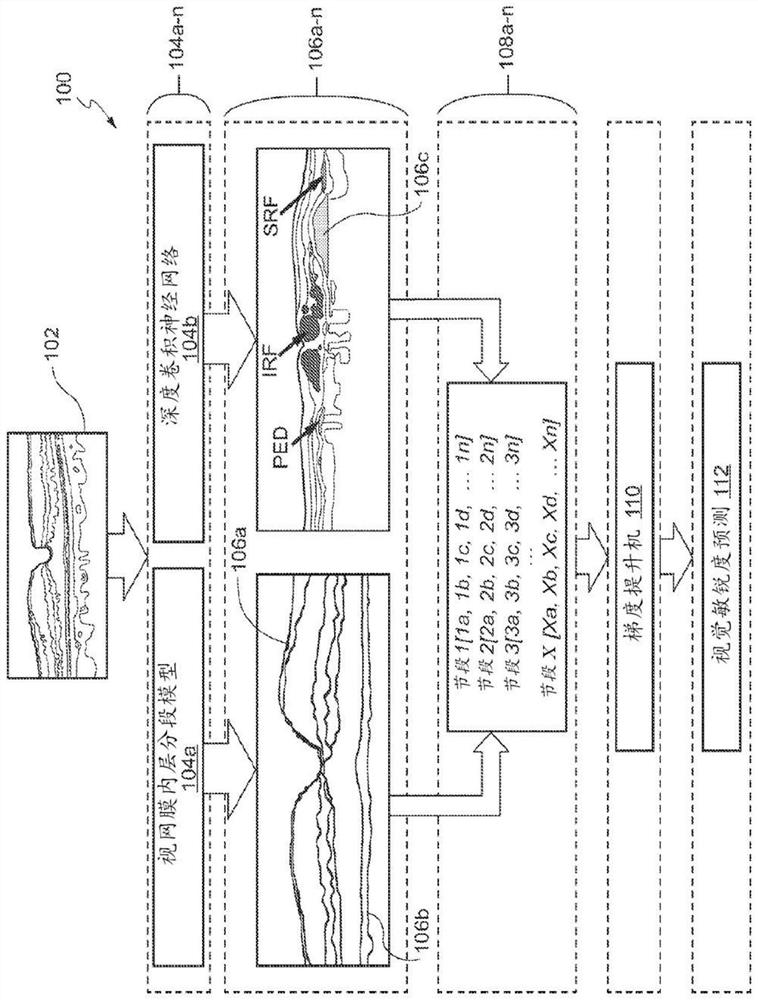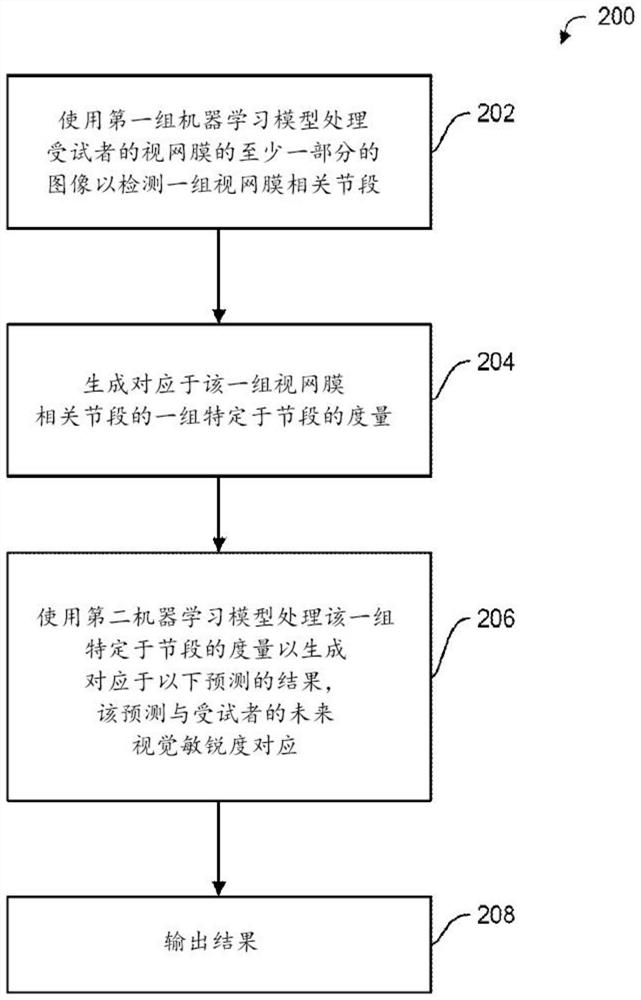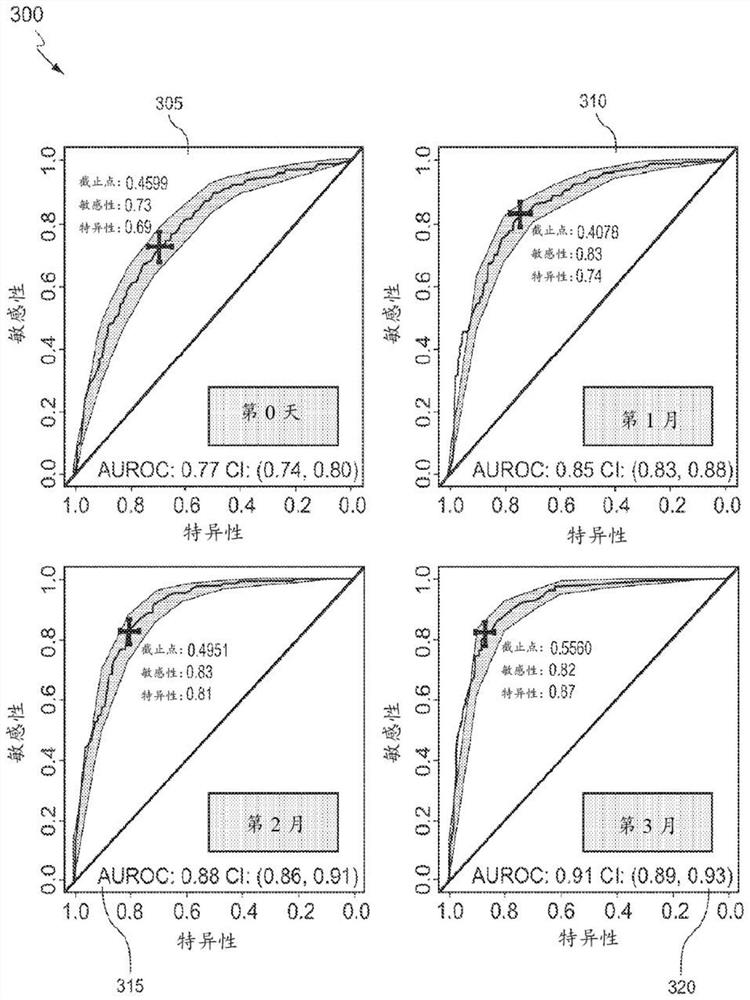Machine learning techniques for predicting future visual acuity
An acuity and retinal technology, applied in the direction of eye testing equipment, instruments, applications, etc., can solve the problem of not publicly predicting the visual acuity of the subjects
- Summary
- Abstract
- Description
- Claims
- Application Information
AI Technical Summary
Problems solved by technology
Method used
Image
Examples
Embodiment Construction
[0028] I. Overview
[0029] To address at least the above-mentioned deficiencies of conventional machine learning systems, the present techniques use a machine learning model to generate predictions corresponding to a subject's future visual acuity. An image depicting at least a portion of the subject's retina may be processed by a segment detection machine learning model to detect a set of retinal-related image segments corresponding to retinal structures or a certain type of retinal fluid. For each retina-related image segment in a detected set of retina-related image segments, a segment-specific metric can be generated. Segment-specific metrics may relate, for example, to the relative position, width, depth, curvature, or degree of homogeneity of the segments. The segment-specific metrics corresponding to the set of retinal-related image segments can be processed using a metric processing machine learning model to generate results corresponding to predictions correspondi...
PUM
 Login to View More
Login to View More Abstract
Description
Claims
Application Information
 Login to View More
Login to View More - R&D
- Intellectual Property
- Life Sciences
- Materials
- Tech Scout
- Unparalleled Data Quality
- Higher Quality Content
- 60% Fewer Hallucinations
Browse by: Latest US Patents, China's latest patents, Technical Efficacy Thesaurus, Application Domain, Technology Topic, Popular Technical Reports.
© 2025 PatSnap. All rights reserved.Legal|Privacy policy|Modern Slavery Act Transparency Statement|Sitemap|About US| Contact US: help@patsnap.com



